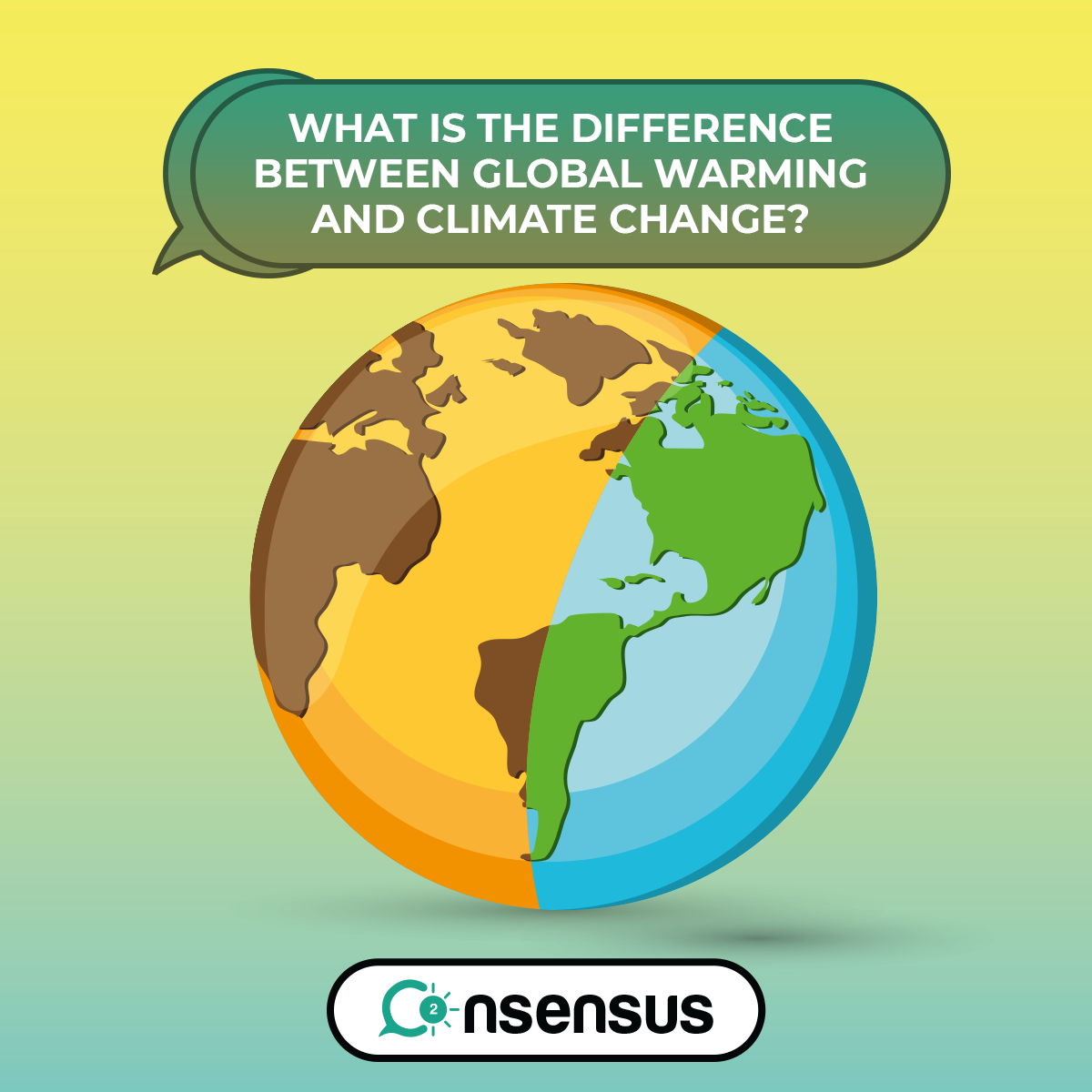The terms ‘global warming’ and ‘climate change’ are both commonly used. However, these terms are sometimes misunderstood and used in the wrong way. Many people think of global warming and climate change as synonyms, but scientists prefer to use “climate change” when describing the complex shifts now affecting our planet’s weather and climate systems. Climate change encompasses not only rising average temperatures but also extreme weather events, shifting wildlife populations and habitats, rising seas, and a range of other impacts. All of these changes are emerging as humans continue to add heat-trapping greenhouse gases to the atmosphere.
Basically, climate change is the term used to describe changes that are caused either by natural causes such as ice ages or due to human activities. Many human activities such as burning of fossil fuels, production of aerosols in to the atmosphere, and many others are responsible for causing climate change.
This is the reason why the Earth has experienced climate change over the period of many years, with drastic temperature fluctuations recorded throughout.
On the other hand, the term global warming is just one of the outcomes of climate change. It usually refers to the Earth’s rising surface temperature. Global warming is usually the result of rapid increase in the production of carbon dioxide and other greenhouse gases which are produced from the burning of fossil fuels such as coal, oil, and gas. Consequently, we are faced with problems like severe weather conditions, melting glaciers, and more frequent droughts, heavy rainfalls and floods.
Moreover, global warming typically describes the increase in global average temperature. The current global average temperature is 59°F and is projected to increase 3-7°F by 2100. It is generally thought that the man-made increase in greenhouse gases due to the burning of fossil fuels is causing or expediting this warming. However, the rise in global average temperature doesn’t mean the temperature will increase by the same amount everywhere. It just means that the average global temperature is increasing.
The current increase in global average temperature appears to be occurring much faster than at any point since modern civilization and agriculture have developed quite fast for the past couple of years.
It is estimated that since 1906, the global average surface temperature has increased by more than 1.6 ºF and even more in sensitive Polar Regions. The adverse impacts of global warming such as the melting of glaciers and sea ice, shifting precipitation patterns, and forcing the animals to migrate from their natural habitats have become prevalent.
According to scientific research, there effects of global warming include the following:
- Ice is melting worldwide, especially at the Earth’s poles. This includes mountain glaciers, ice sheets covering West Antarctica and Greenland, and Arctic sea ice. In Montana’s Glacier National Park the number of glaciers has declined to fewer than 30 from more than 150 in 1910.
- Much of this melting ice contributes to sea-level rise. Global sea levels are rising 0.13 inches (3.2 millimeters) a year, and the rise is occurring at a faster rate in recent years.
- Rising temperatures are affecting wildlife and their habitats. Vanishing ice has challenged species such as the Adélie penguin in Antarctica, where some populations on the western peninsula have collapsed by 90 percent or more.
- As temperatures change, many species are on the move. Some butterflies, foxes, and alpine plants have migrated farther north or to higher, cooler areas.
- Precipitation (rain and snowfall) has increased across the globe, on average. Yet some regions are experiencing more severe drought, increasing the risk of wildfires, lost crops, and drinking water shortages.
- Some species—including mosquitoes, ticks, jellyfish, and crop pests—are thriving. Booming populations of bark beetles that feed on spruce and pine trees, for example, have devastated millions of forested acres in the U.S.
There are a number of ways in which we can we can reduce global warming and reverse the effects of climate change.
Renewable Energies
The first way to prevent climate change is to move away from fossil fuels. Renewable energies like solar, wind, biomass and geothermal are the most common renewable energy sources available.
Energy and Water Efficiency
Producing clean energy is essential, but reducing our consumption of energy and water by using more efficient devices (e.g. LED light bulbs, innovative shower system) is less costly and equally important.
Sustainable Transportation
Promoting public transportation, carpooling, but also electric and hydrogen mobility, can definitely help reduce CO2 emissions and thus fight global warming.
Sustainable Infrastructure
In order to reduce the CO2 emissions from buildings – caused by heating, air conditioning, hot water or lighting – it is necessary both to build new low energy buildings, and to renovate the existing constructions.
Sustainable Agriculture & Forest Management
Encouraging better use of natural resources, stopping massive deforestation as well as making agriculture greener and more efficient should also be a priority.
Responsible Consumption & Recycling
Adopting responsible consumption habits is crucial, be it regarding food (particularly meat), clothing, cosmetics or cleaning products. Last but not least, recycling is an absolute necessity for dealing with waste.
We all live in the world and we are all affecting it. Since global warming and climate change are widely used in the media to discuss the effects of using fossil fuels and adding carbon dioxide to the atmosphere, you should understand the difference between them.
